Early French 75 mm
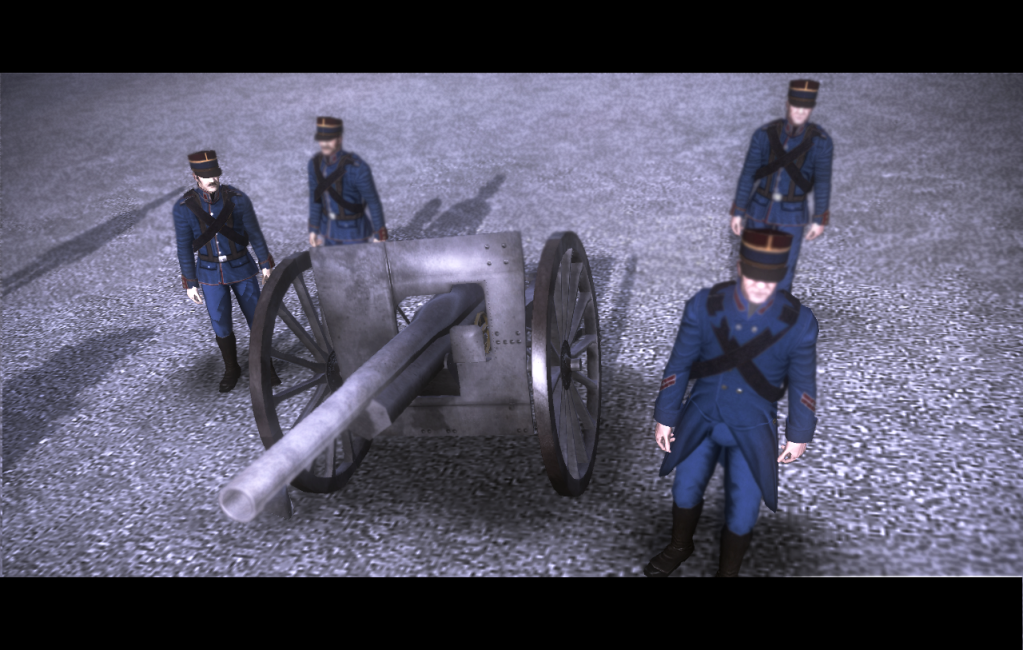
The first true rapid-firing cannon, Canon de 75 mle 1897 revolutionized artillery warfare with its hydro-pneumatic recoil system, which together with its Nordenfeld breech loading mechanism enabled it to fire as many as 28 shells per minute. The field cannon was to become France's artillery of choice in World War I, as truly soaring numbers - over 4,000 - of the Canon de 75 mle 1897 were in service at the onset of the war. It was thought that, when massed together, the rapid rate of fire of the 75mm artillery pieces would be able to compensate for the lack of explosive power in the shells they launched; but this soon proved to be a disastrous miscalculation. The massed formations of the "75:s" were, in the end, no match for the entrenched German howitzers.The early French 75mm Field Cannon is painted in a grey-blue, with brass handles. As the war wore on, more appropriate camouflage was applied to the pieces.
Late French 75 mm
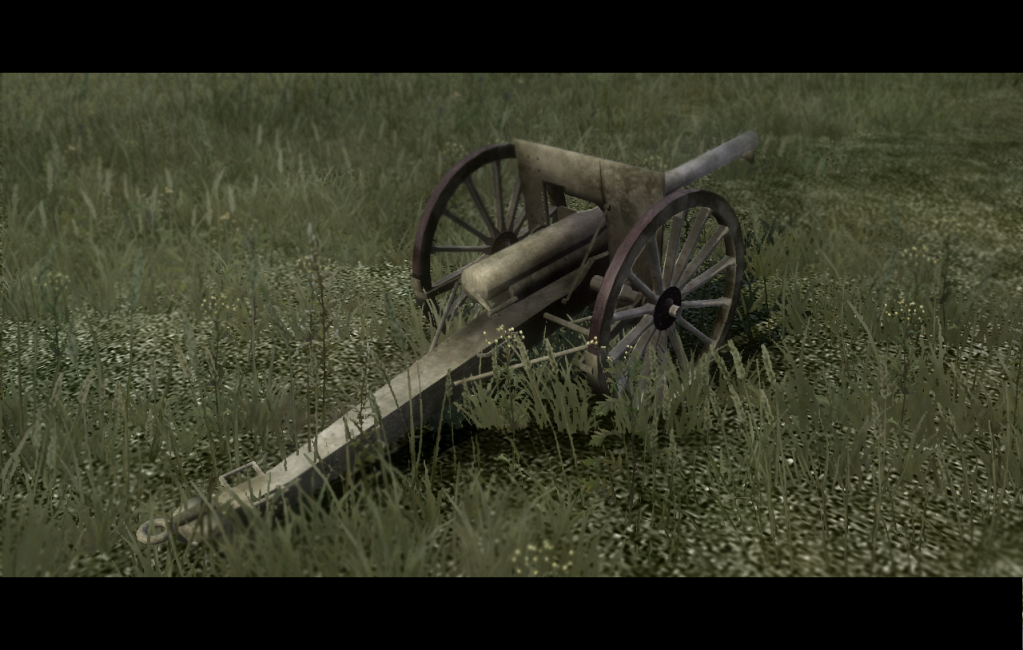
The first true rapid-firing cannon, Canon de 75 mle 1897 revolutionized artillery warfare with its hydro-pneumatic recoil system, which together with its Nordenfeld breech loading mechanism enabled it to fire as many as 28 shells per minute. The field cannon was to become France's artillery of choice in World War I, as truly soaring numbers - over 4,000 - of the Canon de 75 mle 1897 were in service at the onset of the war. It was thought that, when massed together, the rapid rate of fire of the 75mm artillery pieces would be able to compensate for the lack of explosive power in the shells they launched; but this soon proved to be a disastrous miscalculation. The massed formations of the "75:s" were, in the end, no match for the entrenched German howitzers.The late-period French 75mm Field Cannon is painted to better blend in with the environment, having been given shades of olive-green.
Vickers Mk 1 Machinegun
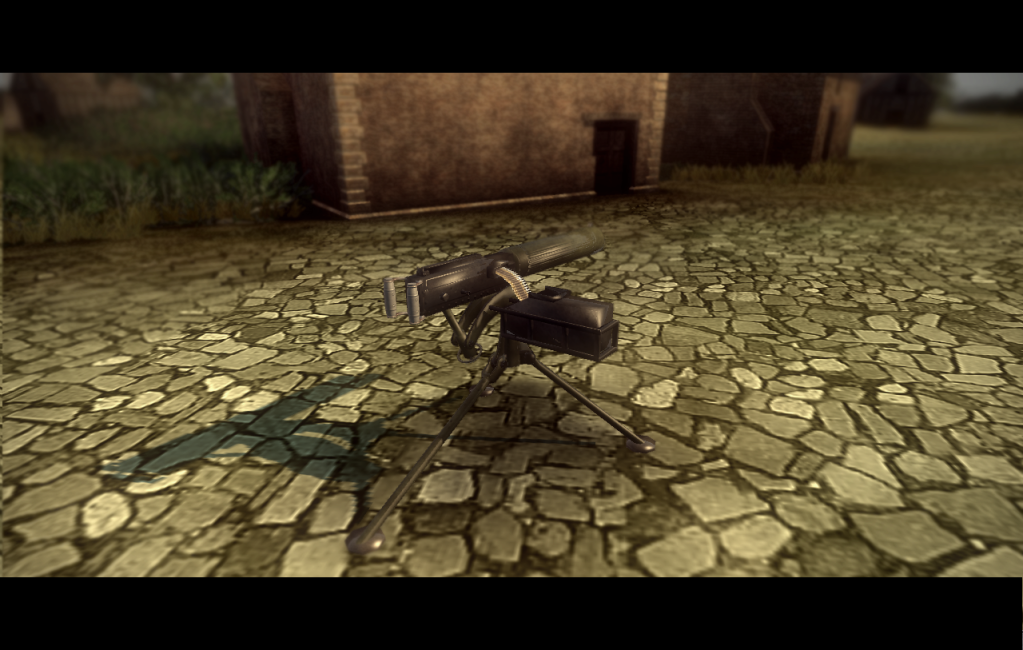
The Mk 1 was adopted by the British army in 1912 as its replacement for the Maxim machinegun. Similar to the equipment it was to replace, the Vickers used recoil operation (as opposed to the French Hotchkiss machinegun which relied upon gas operation), and still had a rate of fire averaging 450 rounds per minute, but was lighter due to the fact that its construction was composed solely of steel.
15 cm sFH 13

At the onset of World War I, the Germans held a significant advantage in artillery firepower with the 15 cm schwere Feldhaubitze 13 (15 cm heavy field howitzer 13). The Entente, lacking heavy-calibre guns able to match the German pieces during the early phase of the war, were forced to bide their time in search for an equivalent until late 1915, when the British first fielded their 6 inch 26 cwt howitzer.
Russian 152 mm
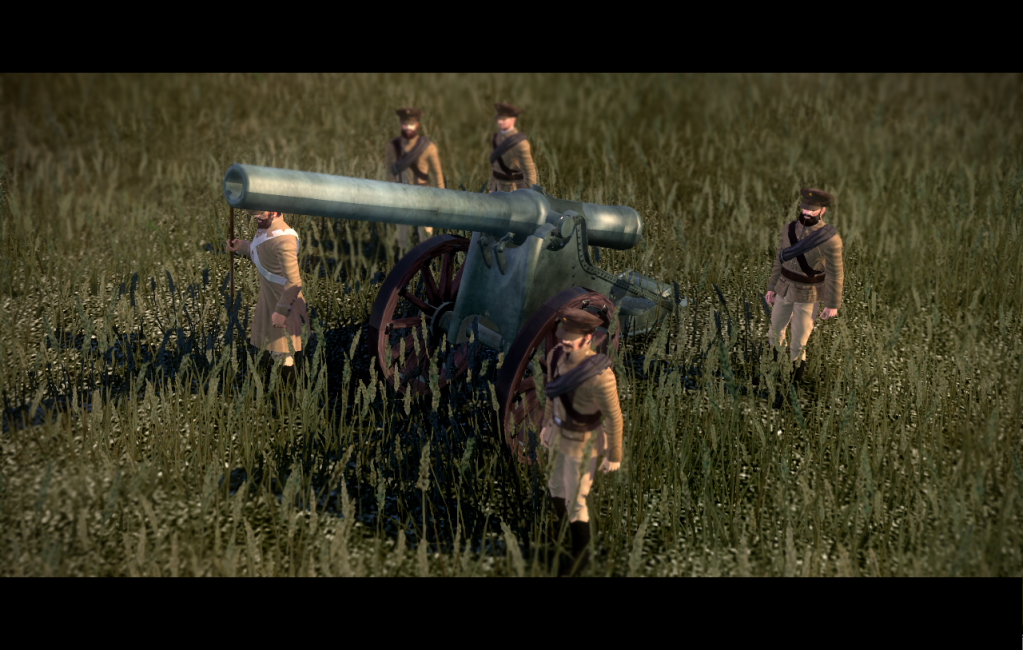
Note: the stoke staff will be removed upon release.
The Russian Obuchov 152 mm m/04 cannon was, in many ways, an antique on the battlefields of World War I. Without an on-carriage recoil system, the cannon was in many ways remniscent of far older pieces from the 1880s, having an obsolete Napoleonic two-wheel carriage capable only of making controlled firing impossible without additional equipment; to effectively use the piece, hydraulic recoil mechanisms tethered to a ground anchor, and wheel wedges, were required. Nevertheless, the 152 mm cannon proved to be a capable battlefield companion throughout the entirity of the war, as its long barrel gave it the treasured ability to blast away heavy shells with a high amount of accuracy. Like many other artillery pieces from World War I, the Obuchov 152 mm m/04 was deployed, once again, in World War II: the Finns used the heavy cannon against Soviet units during the Winter War of 1939-40.
Stokes Mortar
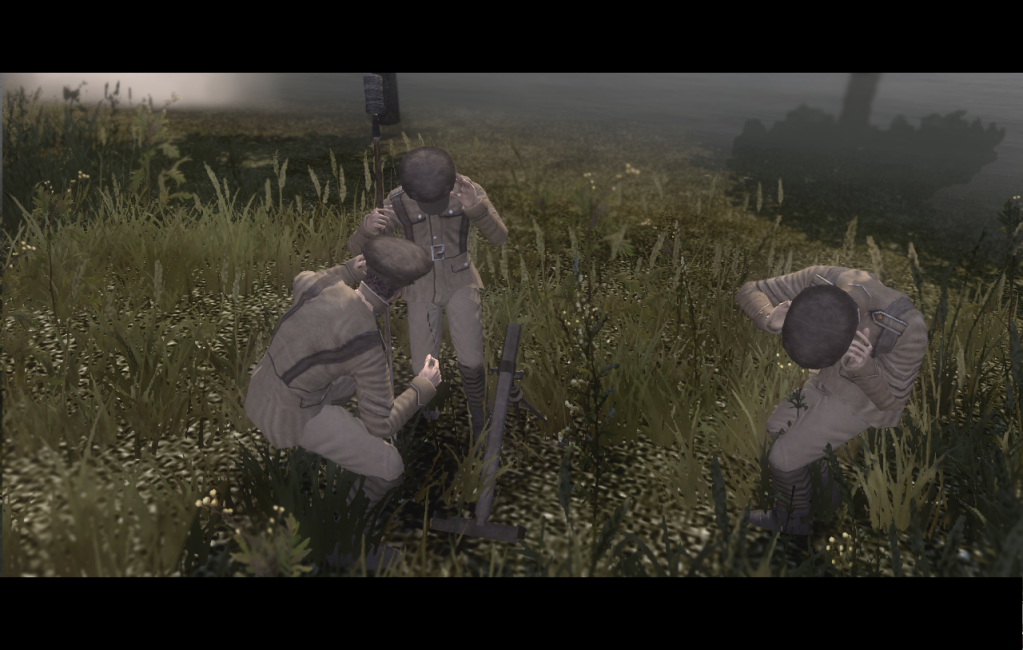
Note: the stoke staff will be removed upon release.
In many ways, the Stokes mortar was a revolutionizing concept. The British - in search of a trench mortar that would match the German Minenwerfer on the western front - developed a simple, yet highly effective infantry artillery piece that would lay the foundations for generations of mortars to come. Unlike its contemporaries, the Stokes mortar was relatively nimble, and could sustain a high rate of fire thanks to the mechanism that would bring about its success: a shell was dropped down into the barrel, and struck a firing pin, which ignited the driver charge and subsequently fired the mortar.



so are you going to recode the vickers? how will it fire?
Naww no tank screenshots. The one that you guys posted on TWCenter was epic.
This comment is currently awaiting admin approval, join now to view.